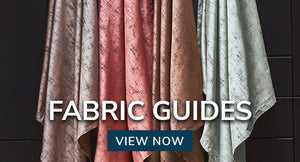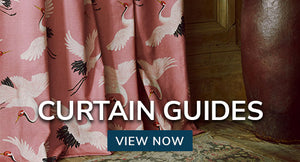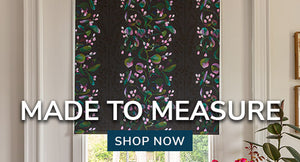Fabric of society
For many people, textiles are an overwhelming passion. A chair may be an object of sculptural beauty, but a textile holds more tactile appeal. And, with their woven or printed patterns, textiles demand to be considered thoughtfully, as if contemplating a painting for its use of colour or ingenuity of composition. Strangely enough though, textiles and rugs are often wrongly viewed as the poor relations of larger or bulkier household items like furniture or lighting.
Perhaps this is because they are flat and two-dimensional and therefore easier to overlook or ignore. However many famous designers have turned their hand to textile design, recognizing the importance of textiles and fabrics in interior design and each era has had its classic look and pattern.
A history of fabrics
During the 1920s the most popular motifs were abstract or stylised, with overlapping squares or circles featuring prominently along with other geometric designs. Moving into the thirties and patterns became even more abstract with the style typified by famous textile designers of the era such as Marion Dorn and Evelyn Wild.
Improved dying techniques meant, lines where more definite and colours contrasted with more sharpness, this now classic abstract linear patterning can be found in many fabrics and rugs today as it is a style that fits perfectly with contemporary fashions. The forties and fifties saw a restricted palette become fashionably avant-garde through what was initially a necessity. The war years had left a drain on resources and money, so colour runs in textile factories had to be limited.
The 1960's
This culminated in the iconic white background and minimal patterns look of the period, with textile designer Ray Eames making the most famous fabric pieces in this much imitated style. New materials introduced in the sixties allowed much more plasticity in furniture design. Curved surfaces and freely shaped forms became all the rage and this was reflected in the textiles which contained circular patterns and in the case rugs, came in circular or oval shapes. As Pop culture began to dictate that everything become wacky, textiles began to hold more appeal to famous fashion houses such as Christian Dior and Mary Quant who would both go on to create bed and bath linen which summed up the look of the period.
Moving away from classic textile patterns and designers, there have also been certain types of textiles which have become synonymous with particular eras and are therefore essential if you are attempting a recreation in your home. Sheep skin and shag pile are both classic rug materials in retro design as they sit so well next to the plastics of the sixties and teak of the seventies.
Art deco designs
Animal hides such as zebra will really finish off an Art Deco themed room when used a rug, as will thick velvet ready made curtains. For 1950s style interiors, synthetic materials like vinyl, polyester and rayon should be used. Now that modern textiles and rugs, especially those designed by such well-known names as Eileen Gray, Ray Eames and Lucienne Day, are so collectable, many owners hang their acquisitions on the wall as if they were tapestries or paintings. This allows them to be appreciated as the valuable object they are, and avoids unnecessary wear and tear.



























































